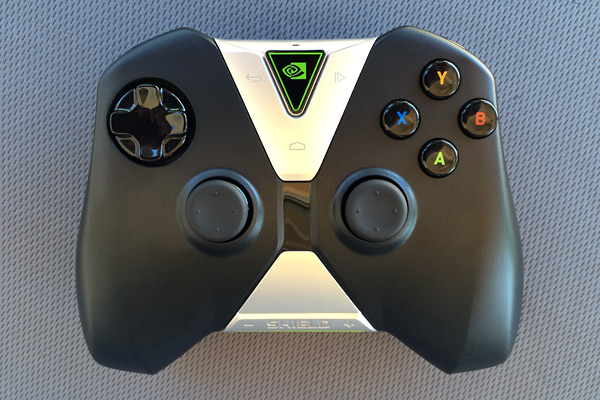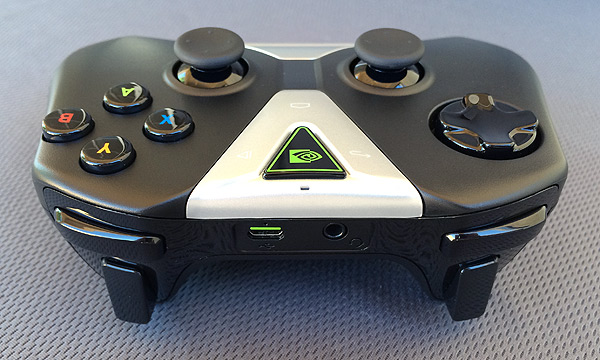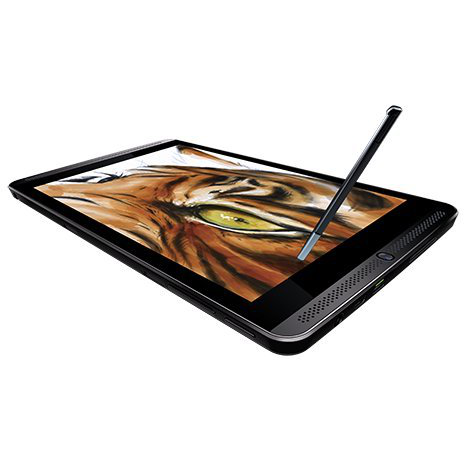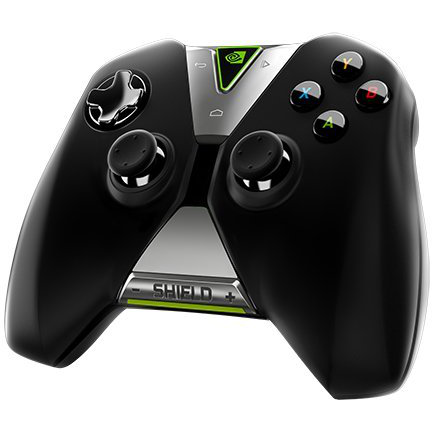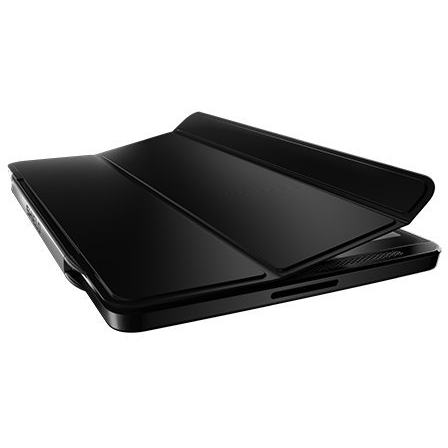Nvidia Shield Tablet And Shield Controller Review
The Shield Tablet, powered by Nvidia’s Tegra K1 SoC, deftly handles browsing and media playback duties. Combining it with the wireless Shield Controller transforms the 8-inch device into an exciting mobile gaming platform.
Shield Controller: Look And Feel
The Shield Controller is naturally modeled after the Shield Portable, with a similar control layout and feel. Its shape is comfortable, but a bit undersized for my large hands. The balance feels just right; it’s not overly heavy. Gaming controls consist of a D-pad, dual clickable analog sticks, four buttons (X, Y, A, B), two bumpers, and two triggers.
My only complaint about the controls is that the trigger buttons' throw is a bit long. It doesn’t take much travel to activate them, while there’s a lot of extra travel afterwards that doesn’t seem necessary. To be fair, my trigger finger is accustomed to a mouse button, so gamers more accustomed to a controller might not share my opinion.
The controller offers additional features beyond the obvious. Its green, triangular Nvidia button turns the controller on/off, pairs it with the tablet and launches the Shield Hub app. Surrounding the Nvidia button are three capacitive buttons used for navigating within games and the Android UI. Centered below the triangle is the Home button, which functions as the standard Android Home button. Double-tapping it opens the task switcher and long-pressing launches Google Now for issuing voice commands (a microphone is located above the triangular Nvidia button). There’s also a Back button for Android that, when long-pressed, opens the Nvidia Share menu for connecting to Twitch, offline recording and taking screenshots. The Start button may be used for PC gaming functions.
The right joystick controls an on-screen mouse cursor. For finer control, or when the right joystick is unavailable during a game, there’s a small capacitive, clickable touch pad for mouse navigation duties. Its sensitivity is adjustable, and while not as smooth as a laptop track pad, it works well enough for basic navigation. If the tablet is out of reach (like when it’s connected to a TV) and you find it necessary to enter some text, the touch pad works with the on-screen keyboard. That's not ideal, obviously, but it's far better than using a numeric keypad on a TV remote.
Below the touch pad is a momentary rocker switch for controlling volume. Pressing both sides simultaneously mutes the sound, which is the only functionality it provides when connected to a TV.
The front of the controller has a micro-USB 2.0 port for charging the Li-ion battery and a headphone jack that supports headsets with microphones. Having the headphone jack on the controller is convenient; it maintains the absence of wires between you and the tablet.
Get Tom's Hardware's best news and in-depth reviews, straight to your inbox.
Current page: Shield Controller: Look And Feel
Prev Page Shield Tablet: Look And Feel Next Page Software Tour-
blubbey Those GPGPU benchmarks are ridiculous in comparison. It looks like a great bit of kit from what I've seen so far. A die shrunk Maxwell should be fantastic. Maybe even a lower clocked version just for power consumption? It'll still perform as well, if not better than the K1 at 750MHz (assuming 2 SMMs) I'd assume.Reply -
Memnarchon "Based on these results, Tegra K1 must be “a neural net processor; a learning computer” sent back through time to destroy all of the other SoCs that could lead a rebellion in the post-apocalyptic future."Reply
Lol this is epic! xD
Anyway, great and unique review. Especially for the so many GPGPU benchmarks.
Nvidia tablet at $299 seems to be a great buy. -
aberkae If maxwell brings double the performance per watt on the same node the next tegra chip on 20 nm node should be a home run for the companyReply -
deftonian Impressive, but I feel it's still missing that "umph" to get me to buy this and carry it around as an added device, next to my phone (Note 3). Maybe I just don't game enough on the android market or steam. Either way, I think it is impressive for a mobile gaming device and all the things it offers. I think they've started a great line and hope it grows into a successful tablet/gaming brand.Reply -
aberkae If maxwell brings double the performance per watt on the same node the next tegra chip on 20 nm node should be a home run for the companyReply -
gio2vanni86 The streaming a game while i'm at my friends house using my PC at home is what has me very interested. Plug into his TV and play amazing games he can only dream of. I'm in.Reply -
vithrell Just wait for Intel's Core M. It wont match the price (CPU alone will cost $300), but in fanless tablet form factor it wont have worthy competitor. Early GPU benchmarks give Core M 55k graphics score in Ice Storm, so more than 1.5x more power than Tegra K1. AND you can run full Windows on it. I wish Nvidia took x86 path with its cpu cores.Reply
